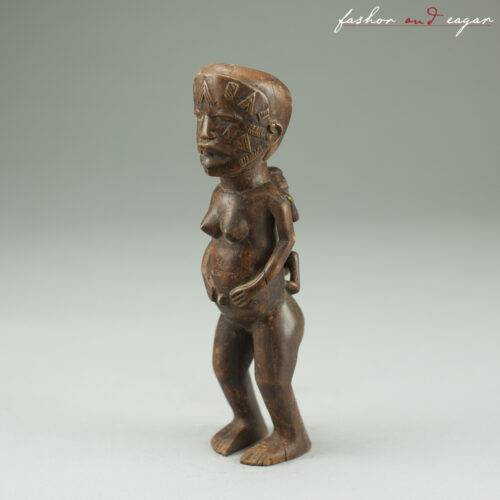Details

ITEM #:
55011
ETHNICITY:
Luba
ORIGIN:
Democratic Republic of Congo
MEDIUM:
Wood, Beads, Patina of Age.
DIMENSIONS:
8″ (20.3 cm) Tall.
CONDITION:
Exceptional
CIRCA:
Early to mid 1900’s

PROVENANCE:
Jean Pierre Hallet Private Estate Collection – California, USA.
Jean-Pierre Hallet was internationally renowned as an africanist, ethnologist, sociologist, humanitarian, agronomist, naturalist, author, lecturer, explorer, photographer, cinematographer, artist, African art authority and collector, and death-defying adventurer. He was best known and revered, however, as the world authority on the culture, languages, and history of African pygmies in general and the Ituri Forest Efé clan of the Bambuti pygmies in particular. Jean-Pierre was the creator and driving force behind The Pygmy Fund, the only organization devoted solely to the preservation of the lives and culture of surviving forest-dwelling Efé pygmies. Numerous organizations can be found to protect and assure the perpetuation of rare and endangered animals and plants. But none exists with a similar objective of protecting rare and endangered human ethnic societies.

CATALOGUE NOTE:
The Luba Caryatid Headrest: A Symbol of Prestige
The Luba Caryatid Headrest is a remarkable object that belonged to the privileged class of the Luba people in earlier times. It served as a substitute for a pillow, elevating the head of its owner while they rested. But its significance goes beyond mere functionality.
These neckrests played a crucial role in allowing prominent Luba families to preserve their intricate hairstyles overnight. Hair styling has always been of great importance to the Luba people, even to this day. Women still create dramatic and labor-intensive coiffures, which are seen as symbols of refinement, social status, and self-esteem, much like scarification.
The Caryatid headrests held a special place in Luba culture. They were sometimes even used in burials, accompanying their owners to the afterlife. Alongside thrones, elegant scepters, sculptural figures, and ornate neckrests, they were commissioned by the wealthy and ruling classes for personal and political purposes.
This particular headrest depicts a member of the privileged Luba class. The figure showcases the iconic “step coiffure,” popular in the Shankadi region of the Luba. Creating this style could take over fifty hours of meticulous work. Coiffures could indicate marital status or cultural roles, but ultimately, the main purpose was to enhance the wearer’s beauty.
Adorned with a blue and yellow necklace, the figure sits proudly atop an antelope with long horns. These magnificent objects not only served utilitarian functions but also embodied the histories, social practices, and spiritual beliefs of the Luba people.










